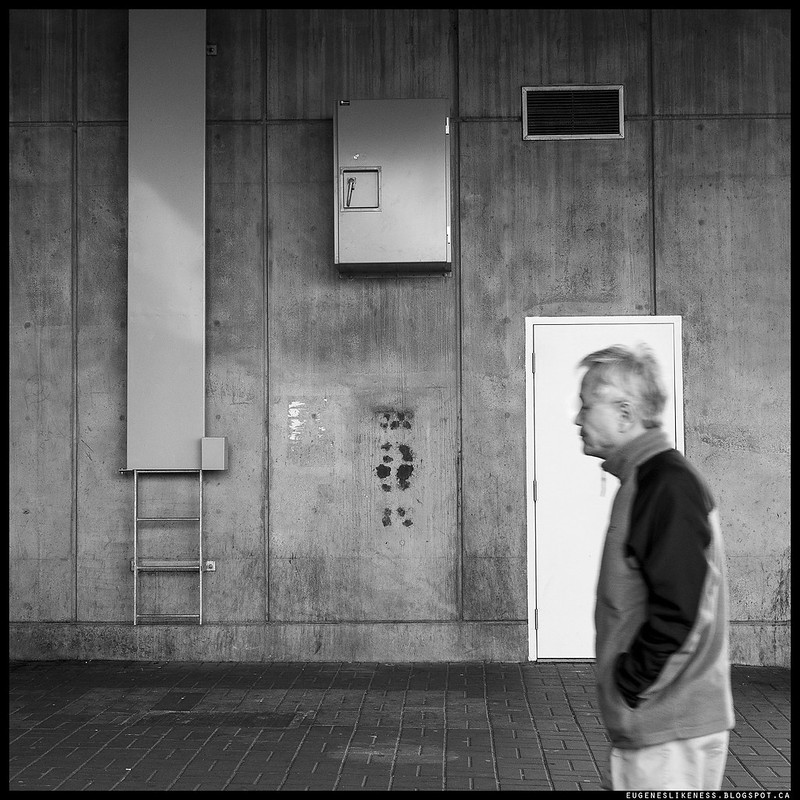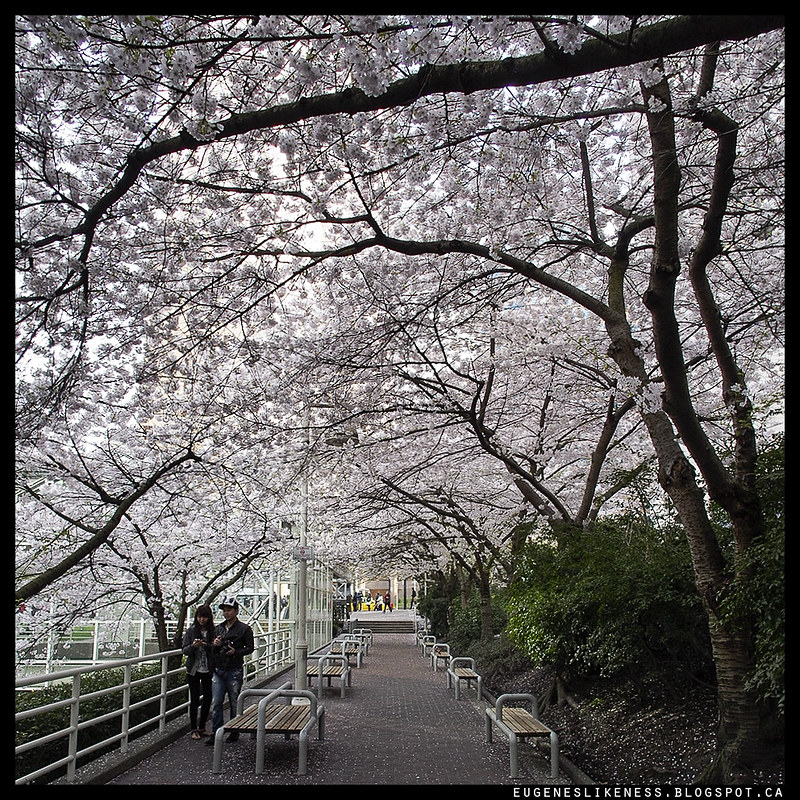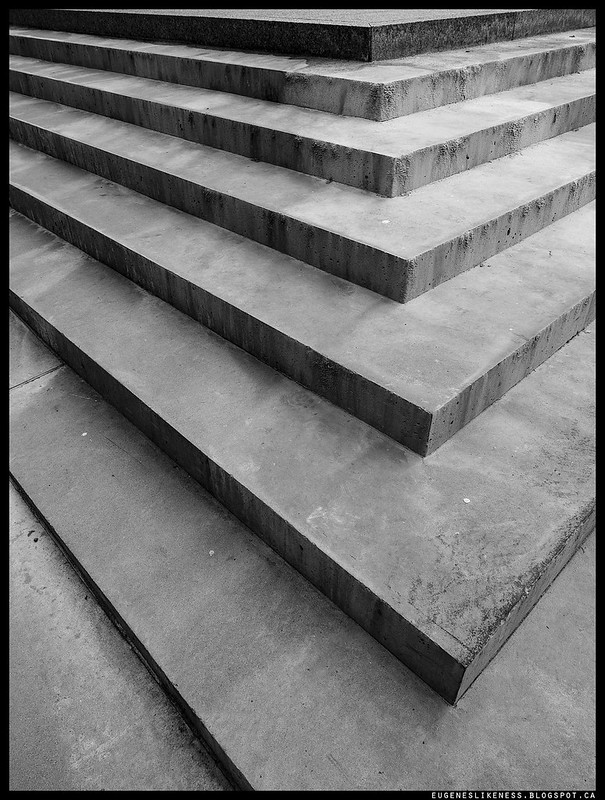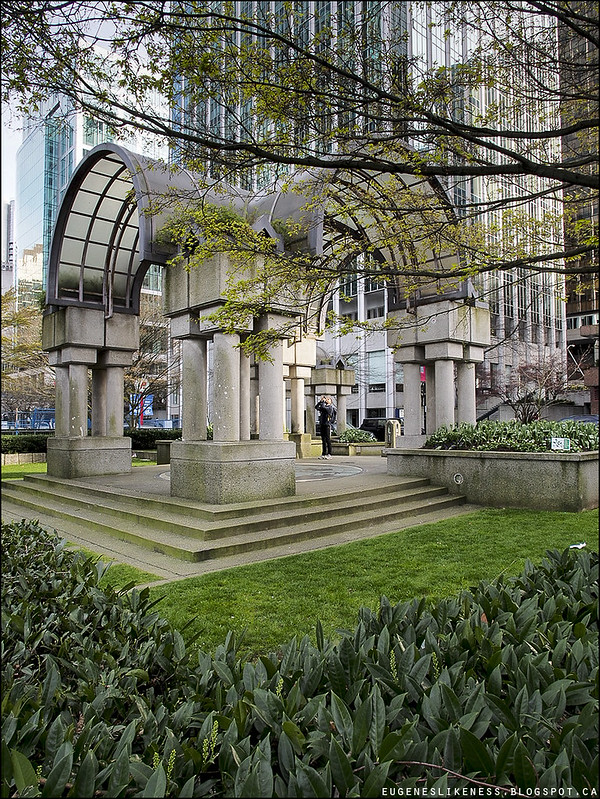Assignment 6 is done, finally. It took me a while because I was not shooting at all, I was uninspired. The assignment was exciting but was a tough one for me. Just as the title says, it's about shooting at moderate distances with everything in focus. Confusing? Easy? I guess if you take it literally you just need to stop down and Ming's advise was to shoot at f/16 (for FF) or use a compact camera to get the depth. The goals of the exercise are:
- Not to always rely on using shallow of depth of field to isolate the main subject
- Focus on composition (hint: subject placement is key)
For this assignment I'm not allowed to edit or do any post work. I have to submit straight out of the camera photos (SOOC). The reason for this is to train myself to have the discipline to start at the best point possible, good composition, good backgrounds and good subject isolation. Post work can help enhance an image but it cannot add what's not there to begin with.
I struggled not because of the degree of difficulty of the assignment but because of my inability to get motivated to shoot. It started well actually and then the mojo went away. I was busy with work and family and that took away some shooting time. It was a good break I think but somehow it affected the quality of my images. Also, I'm not used to NOT editing my images. I shoot RAW because I know I can always improve an image. There will be times it is almost perfect and all I need to do is add a border and put a watermark but more often than not there's something that can make an image look better by doing some minor post work.
Despite the struggle I passed the assignment and I'm currently doing Assignment 7 (A7) which is about using secondary objects to tell a story. These 2 assignments are related which is good because I felt I didn't do very well on this assignment. I now have a chance to rebound and do better. They are related simply because if a subject is well isolated by dof then how can the secondary objects in the scene be used to help tell a story.
All the images in this post are images I submitted to Ming and all of them had minor issues. I'll itemize them below so you could learn from it. Also, these images are already edited.
Rectangles, man and door - this one is better in square format or vertical. I shot it in horizontal orientation so I cropped it to be square. There's also text on the door at the eye level of the man which I removed by cloning. I also converted it to BW as it brought more texture on the wall.
Cherry blossoms (Burrard Station, Vancouver) - it has a nice atmosphere and a good use of wide angle to create perspective convergence in the leading lines. However, the light is flat and when everything is in focus we have to rely on light to give visual cues to depth and help project three dimensions into two. There is also no subject on where the leading lines lead the eye to. I also cropped it because there were distracting benches in the lower left and right corner of the bottom frame.
Terry Fox statues at BC Stadium, Vancouver - a good range of tones and textures. However, my background is busy and that's fine, the problem is I placed the head of the main statue at the corner of the stadium supports. A slightly different angle would work better. I actually had that in mind but I wanted to get the other statues too and it was quite hard to get a better angle to achieve that.
Stairs - the asymmetry creates a left-curving dynamic that prevents either side of the frame from being empty. Nice geometric patterns too. Again, light could have been better. Plus the top frame where the lines intersect the frame could have been better if the corners matched precisely. I tried to do this by rotating the photo a little bit. It's better now but I know I could have done this at time of capture.
Arches - a good mix of textures and the image lightens towards the top of the frame suggesting a good base for anchoring the composition. The subject stands out due to shape but not as strongly as it should. Also the dark band on the right frame is distracting, framing slightly left would fix this and would also avoid cutting off the edge of the stairs.
I hope you find this post helpful. --EP.





Thanks for posting your pictures, I liked them all. Shooting with everything in focus is normally my first choice which is why the DSLR stays at home a lot while I use a compact! Thanks also for posting Mings comments, they provide valuable insight.
ReplyDeleteHi Jan, thank you. I'm glad you find value in it. That's one of the reasons why I decided to write about it.
DeleteShooting at f16 is an interesting exercise and not one that I do very often. To be honest, small apertures in cities for the type of photography I do does not really work - from a technical PoV (slow shutter speeds, etc). You've done well however and I particularly like the first square B&W.
ReplyDeleteGot to pull you (not sure if it is you or your tutor) up about your line "...we have to rely on light to give visual cues to depth." Well if that's not pulled straight out of a book or another website I don't know what is. I hate photographers using pretentious squirrel words like that. What does that sentence even mean? Stamford Uni reckon for monocular vision (which is basically 2d) the following are just some of the depth cues that the visual system uses.....
Linear perspective.
Size gradient.
Height in visual field.
Shading and contours.
Foreshortening.
Occlusion.
Atmospheric blur.
Motion parallax.
While they do not give a weight of use to each of these, light (shading and contours) is only one of many. Additionally, Marko Teittinen from the Human Interface Technology Lab (HITLab) in Washington states that for shades and shadows ".....we tend to resolve ambiguities using this information.", which to me sounds as though it is given a lower general weight.
Anyway, that's off my chest :-)
Looking forward to the next installment.
Thanks Jonathan. I did not really shoot at f/16, not really needed because I use Micro Four Thirds which has lots of depth even at f/5.6. I can shoot between f/4.0 and f/8 (or even f/11 if I have to - normally my limit and very seldomly used by me) and be ok without suffering from diffraction and get everything in focus. It's not just the f/stop anyway that influences this but also the distance of the camera to the subject and the background. I think the f/16 advise was meant for full frame and I don't own a FF camera anymore. And yes, this definitely has an impact in style but it's by no way a suggestion to shoot like that. I think he just wanted me to shoot that way for this exercise so I can pay close attention to composition and to train myself with where I place my subjects and secondary subjects.
DeleteAbout the line, this is exactly what Ming said "When your image has everything in focus, you have to rely on light to help give visual cues to depth and help project three dimensions into two." I have now edited the blog to include the last few words. I think it is important. Anyway, I have no idea where Ming pulled that from. If I have to guess it's probably from his background being a Physicist. Ming is a physicist by training and graduated from Oxford at the age of 16, http://blog.mingthein.com/aboutcontact. I think what he is trying to say is that light (out of the list you mentioned) is the one that would stand out the most when everything is in focus. In the Cherry Blossom photo, his suggestion was to put a subject in where the lines lead the eye to and use directional lighting to enhance it even better. It's actually present in the shot if you look again and I think Ming saw that hence the suggestion. Look at the green bush on the right bottom part, light was able to peak through a small break in the cherry blossom cover and shine on part of the bush. If I placed and timed a person walking in that area it would have worked perhaps. I'm actually going to ask him again to confirm that my understanding is the same as what he was trying to tell me. Thanks again.
My understanding was correct. Ming added with directional light there will be shadows which gives clues to texture, shape, etc.
DeleteI think Jawdoc (http://www.flickr.com/photos/28217693@N02/) is a master of this concept.
ReplyDeleteThanks Kenny. I think so too.
DeleteThanks for posting!
ReplyDeleteThanks Mojo.
Delete